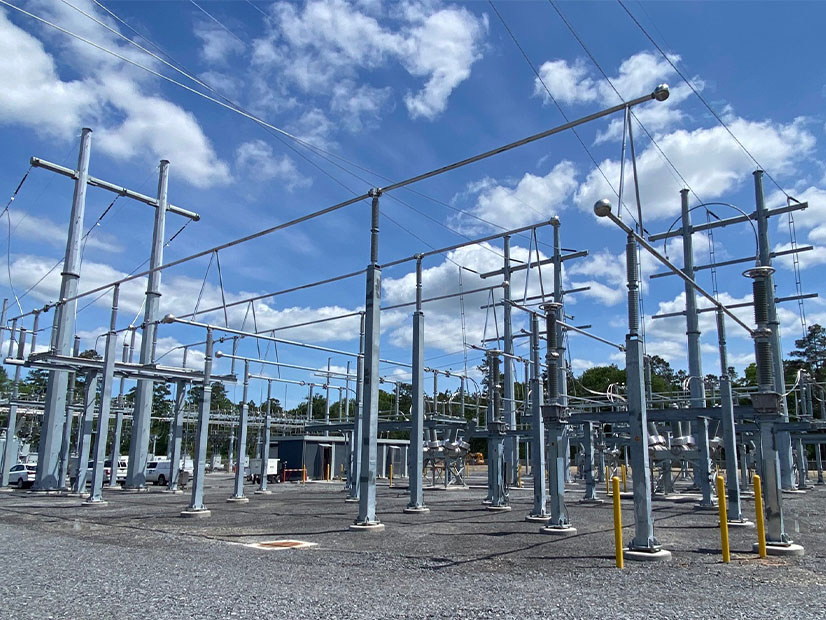The cost of MISO’s 2024 Transmission Expansion Plan (MTEP 24) increased slightly to $5.8 billion, RTO planners said at a midyear checkpoint of the annual transmission planning cycle.
The preliminary MTEP 24 clocks in at 471 projects, stakeholders learned during a series of subregional planning meetings June 3-7. An earlier estimate pinned the MTEP 24 package at $5.5 billion. MISO has said this year’s MTEP marks a return to normal levels of investment following last year’s record-breaking $9 billion package. (See Early MTEP 24 Designates $5.5B in Transmission Spending.)
MTEP 24 includes $688 million in generator interconnection projects and $952 million in baseline reliability projects. Everything else is designated by MISO as “other” and includes projects to address age and condition of facilities, accommodate load growth or meet transmission owners’ self-imposed reliability criteria.
During a June 6 East Subregional Planning teleconference, MISO’s Amanda Schiro said the bulk of MTEP 24’s other project proposals are motivated by load growth and the age and condition of infrastructure.
Schiro said MISO will continue to test projects for alternatives through the summer and share a preview and draft report of MTEP in September. She told stakeholders MISO is no longer accepting ideas for alternative projects.
Return of Hartburg-Sabine Junction?
Again this year, MISO South contains a big-ticket baseline reliability project that has a clean energy group requesting an analysis of alternatives.
Entergy Texas proposed a new 35-mile, 500-kV line and substation in East Texas at $409 million. The utility said the line would help prevent potential thermal overloading of “many” 230-kV lines that supply the Port Arthur area. MISO said Texas accounts for 42% of MISO South costs for MTEP 24 because of the large project.
Last year, Entergy Louisiana proposed nearly $2 billion alone in a baseline reliability project to alleviate its Amite South load pocket; MISO ended up recommending an alternate solution to portions of the project.
The Southern Renewable Energy Association (SREA) has asked that MISO explore resurrecting its $134 million, 500-kV Hartburg-Sabine Junction project in East Texas in place of Entergy Texas’ reliability project.
MISO canceled the development of the market efficiency project in 2022 after Texas enacted a right-of-first-refusal law that delayed construction and Entergy built gas-fired plants in the area that made the line less beneficial. Attempts by transmission developers and clean energy groups to save the project have thus far failed. (See FERC Rejects Last-ditch Effort to Save Tx Project.)
SREA said that because Hartburg-Sabine was proposed to connect to some of the same infrastructure as the new reliability project, it may be able to pull double duty to alleviate reliability problems in East Texas while providing economic value. However, SREA doesn’t know if the market efficiency project can solve the same contingencies.
At the South Subregional Planning meeting June 7, MISO South Expansion Planning Manager Trevor Armstrong said MISO will study the potential for Hartburg-Sabine and present results of its analysis in September.
Entergy Texas did not respond to RTO Insider’s request for comment on whether it thinks Hartburg-Sabine might be a suitable substitution.
Additionally, Entergy Texas last week announced it is seeking permission with the Public Utility Commission of Texas to spend more than $2.2 billion to build two new gas-fired power plants near Entergy’s line proposal — one in Port Arthur and another about 45 miles north of Houston. The utility said both plants would feature hydrogen-capable combustion turbines and one could be equipped for carbon capture.
Entergy said it needs the plants online in 2028 to accommodate “extraordinary economic and population growth.
SREA Transmission Director Andy Kowalczyk said the association believes Entergy Texas must pursue the new plants because it hasn’t addressed its load pockets with meaningful transmission.
“Our general stance is that we believe these sorts of procurements will continue to happen until Entergy addresses the load pockets with increased import capability that provides access to more capacity and market options,” he said in a statement to RTO Insider.
He said Entergy had identified the the East Texas, West of the Atchafalaya, Amite South and Downstream of Gypsy load pockets as issues as far back as 2005. He said that while other Entergy companies focused on Amite South and Downstream of Gypsy with transmission projects in MTEP last year, the focus on alleviating load pockets doesn’t appear to have extended to Entergy Texas.
How MISO can plan for load growth has become a point of focus for some stakeholders.
At the Planning Advisory Committee’s meeting May 29, MISO’s Environmental sector requested that the RTO modify its annual transmission expansion planning and generator interconnection study procedures “to accommodate new, large lumpy loads like data centers and manufacturing.”




